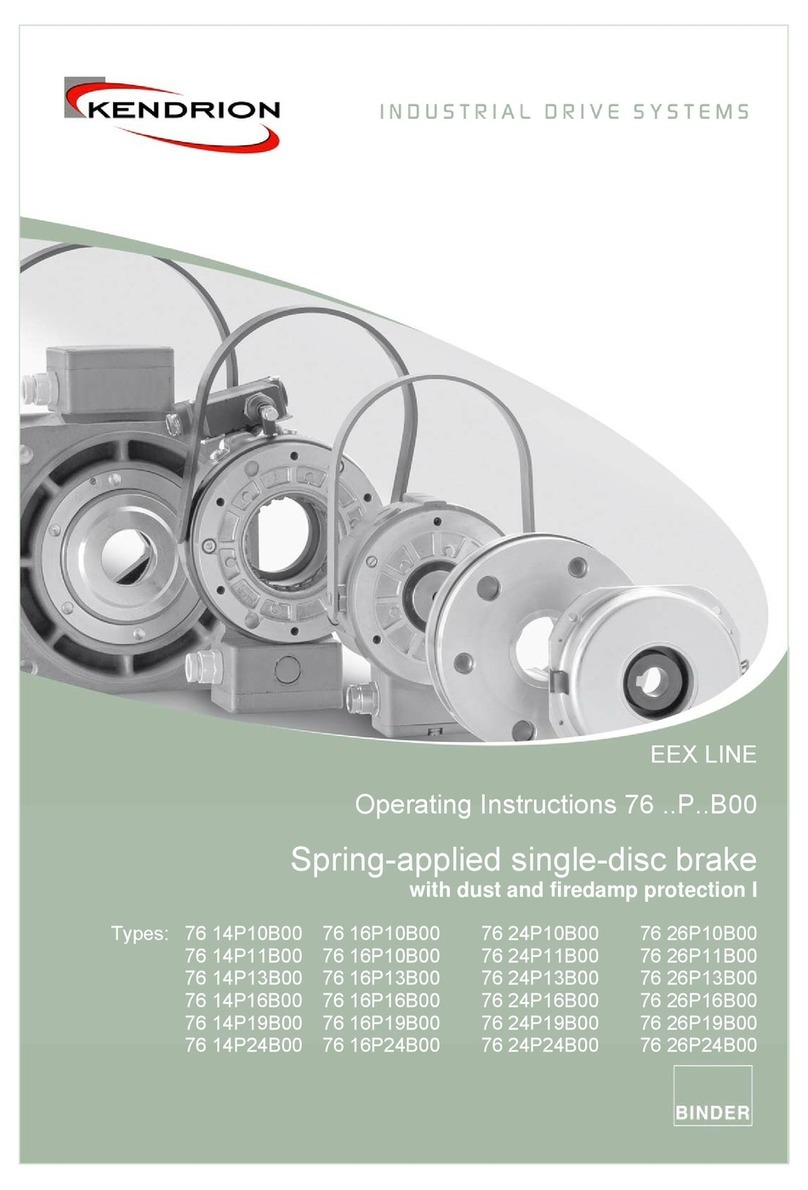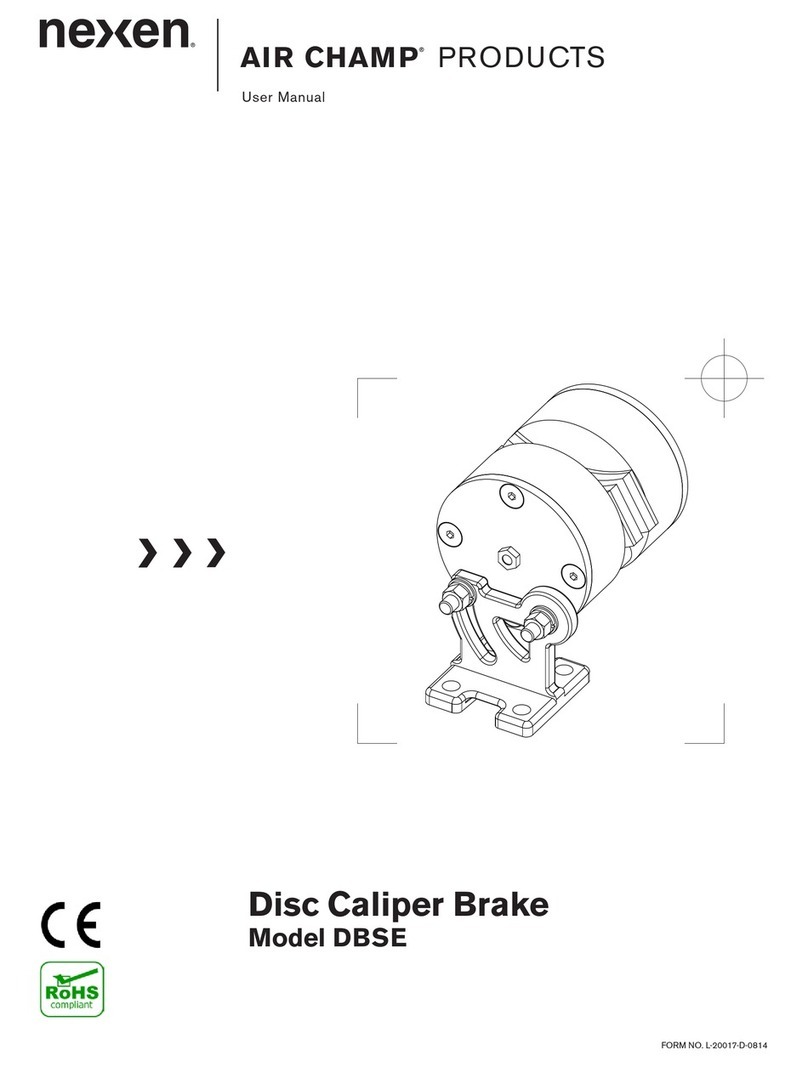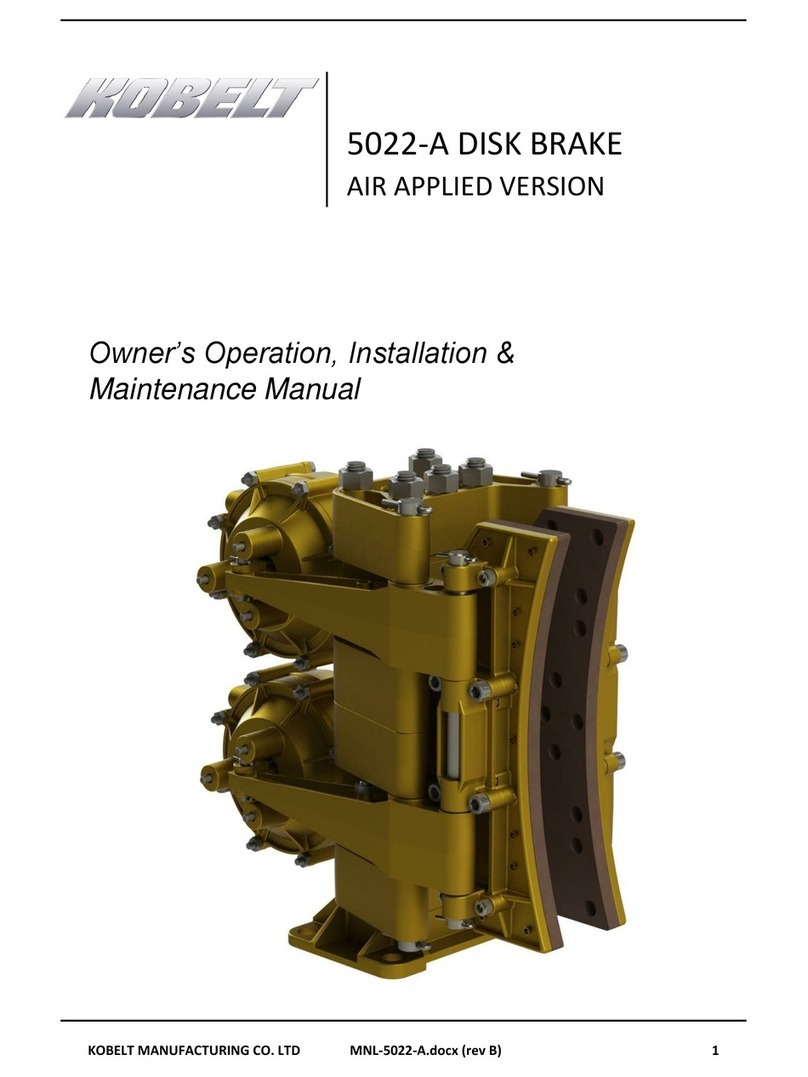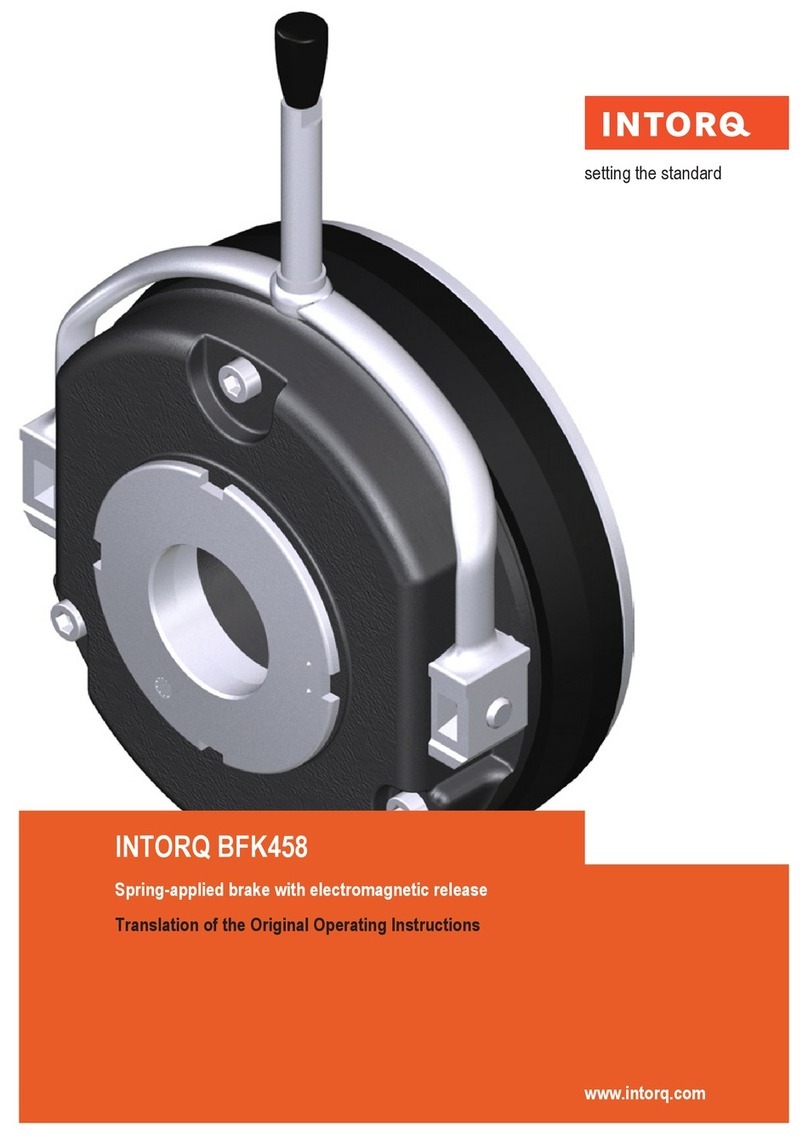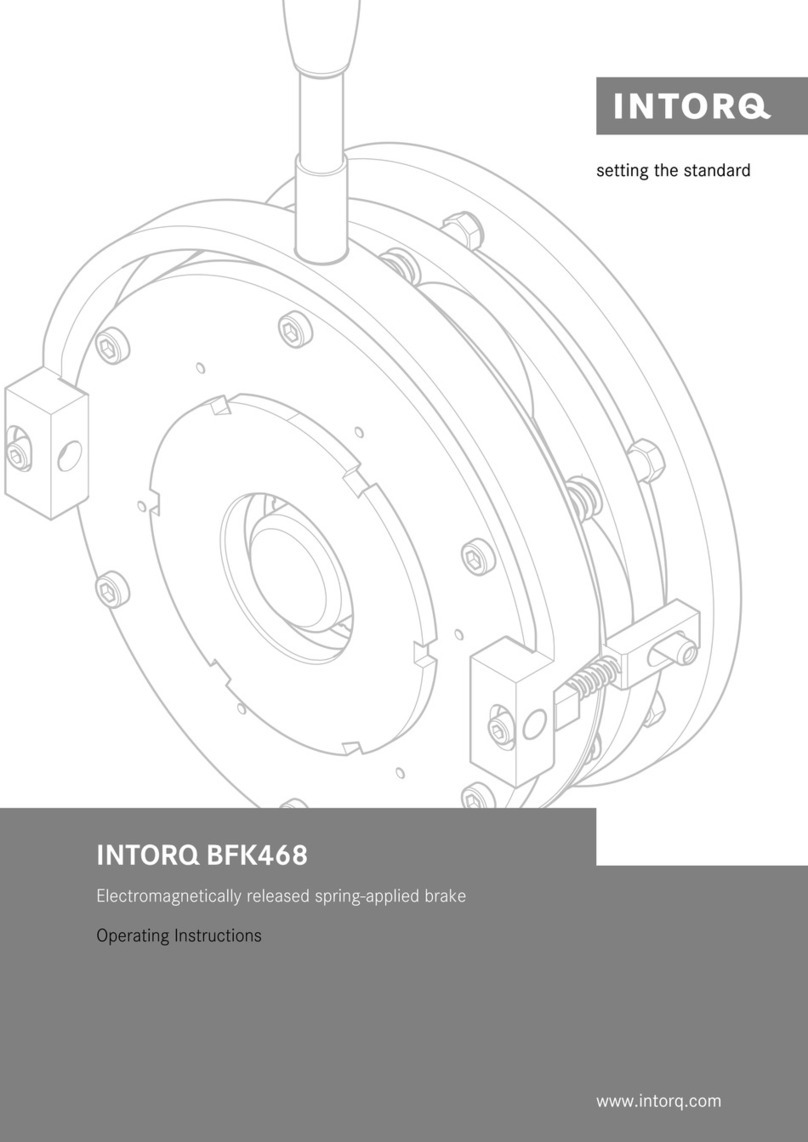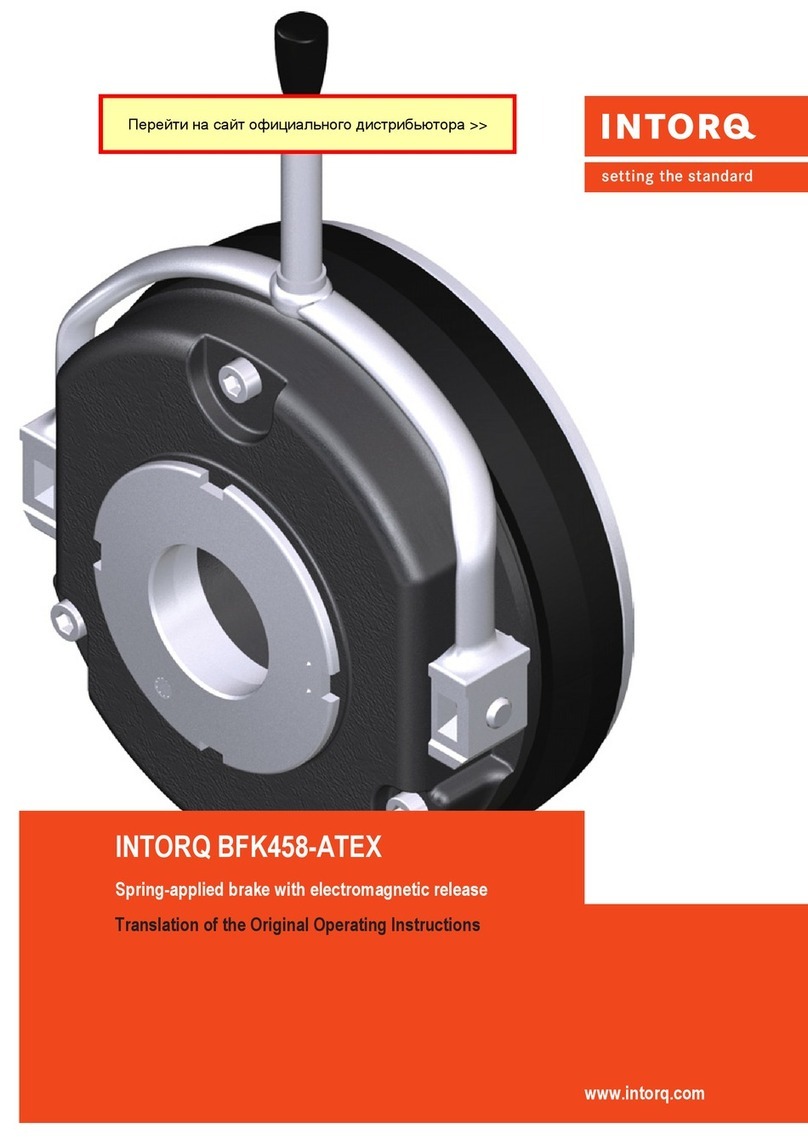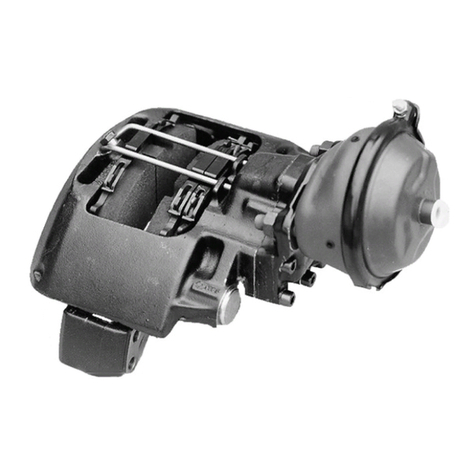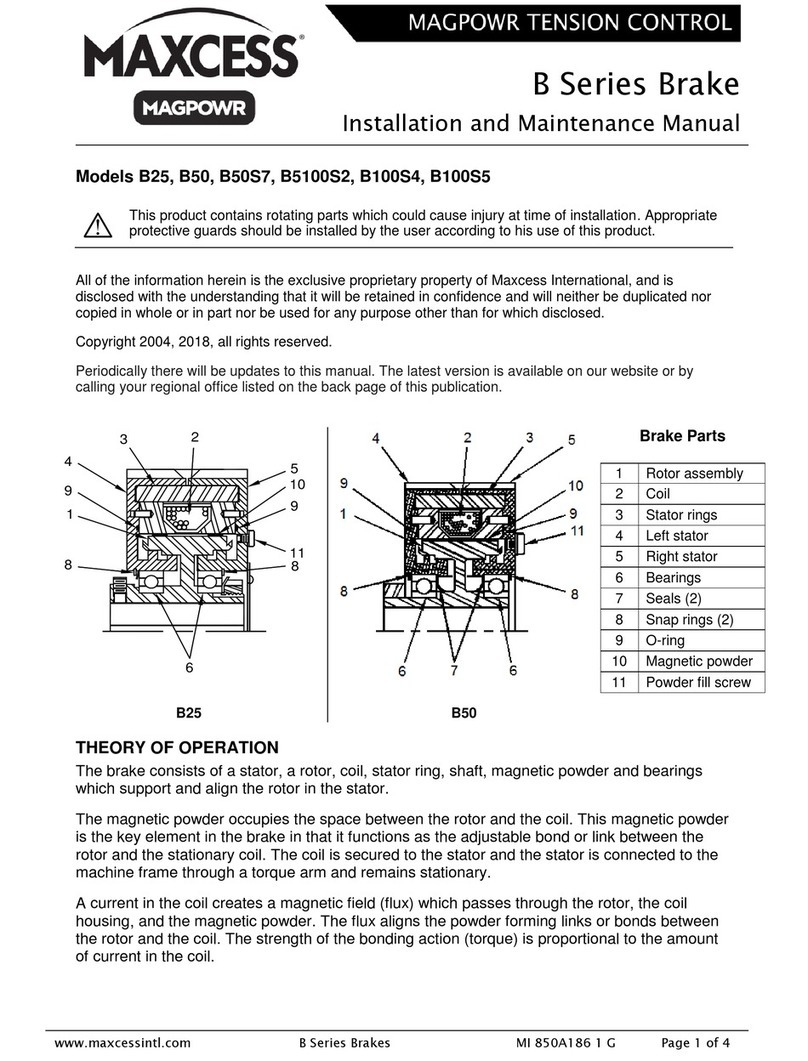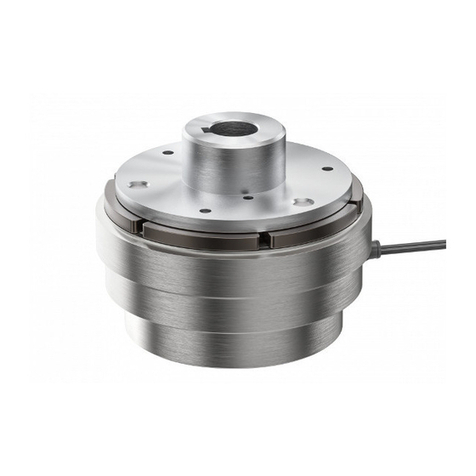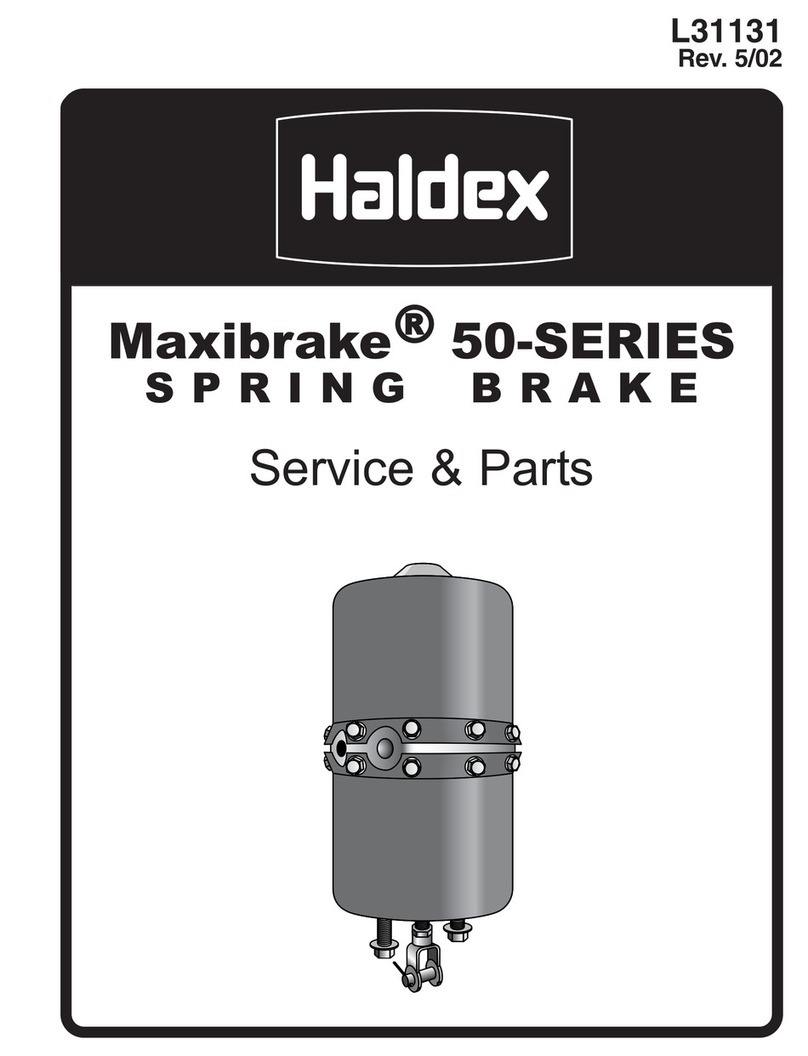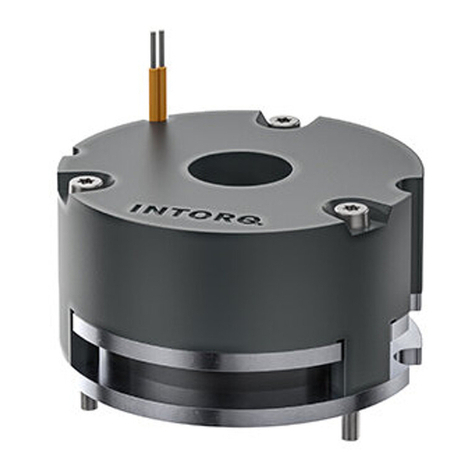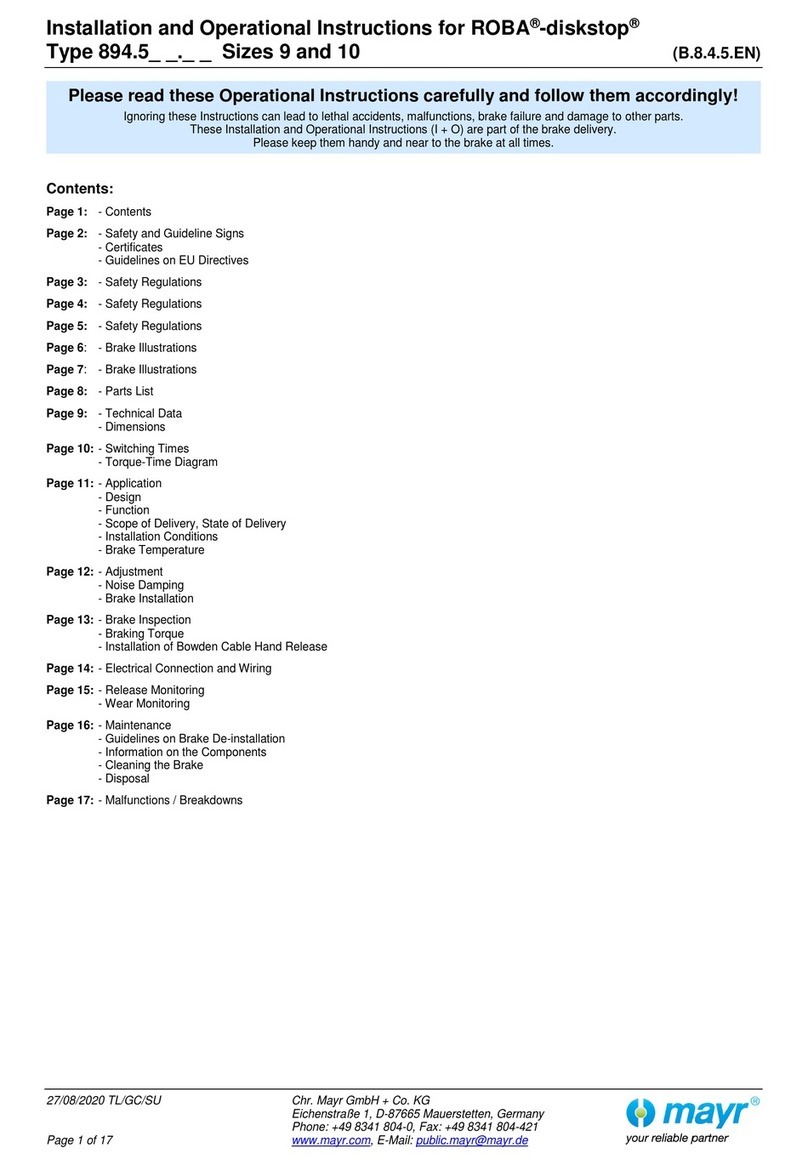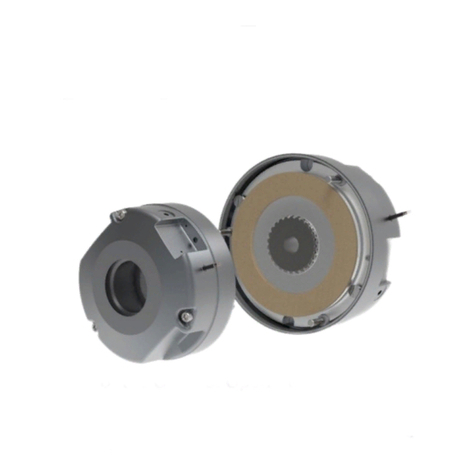
Installation Conditions
The eccentricity of the shaft end against the mounting pitch
circle may not exceed 0,2 mm.
The position tolerance of the threaded holes for the cap screws
(8, Fig. 2) may not exceed 0,2 mm.
The axial run-out deviation of the screw-on surface to the shaft
may not exceed the permitted axial run-out tolerance according
to DIN 42955. Larger deviations can lead to a drop in torque, to
continuous slipping on the rotors and to overheating.
❑
❑
❑
Installation
ROBA-stop®-M brakes are very easy to install:
1. Mount the hub (1) onto the shaft and secure it axially (e.g. using
a locking ring).
– Recommended tolerance of hub-shaft connection = H7/k6.
– Avoid too tight hub-shaft connections (especially on max.
bores). They lead to the rotor (3) jamming on the hub (1) and
therefore to brake malfunctions.
– Keep the friction surfaces free of oil and grease.
Warning!
Please observe supporting length of the key
acc. Dimensions on page 5.
2. If necessary (dependent on Type), move the friction disk or the
flange plate over the shaft and attach it to the machine wall (or
screw on for size 1000).
– If there are no suitable counter-friction surfaces made of grey
cast or steel available, please use brake Types 891._ _2/3._
(with friction disk (9)) or 891._ _.4/5._ (with flange plate).
When using a brake with a friction disk (Type 891._ _2/3._),
please observe the stamp “friction side” on the friction disk.
3. Push the rotor (3) onto the hub (1) by hand.
4. If necessary, install the hand release (only on sizes 2 - 500/the
emergency hand release is partly assembled on size 1000).
5. If necessary (dependent on Type, Type 891._ _ _.1), insert the
O-ring into the axial recess of the coil carrier (2).
6. Push the rest of the brake over the hub (1) and the rotor collar (3).
7. Attach the brake to the motor bearing shield or onto the machine
wall evenly all around by using the cap screws (8) incl. the
manufacturer-side mounted flat sealing ring (dependent on Type,
Type 891._ _ _.1), torque wrench and tightening torque (acc.
Table 1, page 7).
Warning!
Only use mayr
®
original screws (Table 1, page 7).
Braking Torque Adjustment
It is possible to achieve different torque settings or torque reductions
by using different spring configurations (6) in the coil carrier (2) (see
Table 3, page 7).
Design with continuous setting available on request.
Maintenance
ROBA-stop®-M brakes are mainly maintenance-free.
However, the rotor (3) is subject to functional wear. The friction
linings are robust and wear-resistant. This ensures a particularly
long service lifetime.
However, if the rotor (3) does become worn due to high total friction
work, the brake can be brought back into its original functional
condition by replacing the rotor. For this, the brake must be cleaned
thoroughly.
The wear condition of the rotor (3) is determined by measuring the
release voltage (this must not exceed max. 90 % of the nominal
voltage on a warm brake), or by measuring the rotor thickness on a
dismantled brake (“minimum rotor thickness” acc. Table in the cur-
rently valid Installation and Operational Instructions). On sizes 500
and 1000 there is an air gap inspection opening. This means that the
brake does not have to be dismantled.
Warning!
The brake function cannot be guaranteed on brakes with a reduced
braking torque and/or operation with a fast-acting rectifier if the
friction linings are heavily worn.
Unpermittedly high wear cannot be recognized via the switching
behaviour of the brake, as in this constellation the magnetic coil (7)
is able to manage a very high tension path of the armature disk (5).
Unpermittedly high wear causes the thrust springs (6) to relax, which
results in a decrease in torque.
Fig. 2
Fig. 1
Hand Release Installation (Sizes 2 – 500)
On Type 891._ _ _.1 installation of the hand release is only possible
if a request for a hand release is stated on the brake order form
(completely enclosed coil carrier (2)).
The brake must be dismantled and de-energised for the hand
release installation.
Installation Procedure (Figs. 1 and 2):
1. Unscrew brake from the motor bearing shield or from the
machine wall.
2. Remove the sealing plugs from the hand release bores in the coil
carrier (2).
3. Put the thrust springs (10) onto the threaded bolts (11). The
threaded bolts (11) are manufacturer-side produced with a key
as a tension element and are secured with glue up to size M60.
This connection must not be loosened.
4. Push the threaded bolts (11) with thrust springs (10) from the
inside (facing the magnetic coil (7)) into the hand release bores in
the coil carrier (2).
5. Push the O-rings (only with sealed hand release, Type 891._ _ _.1)
over the threaded bolts (11) and insert them into the recesses of
the coil carrier (2).
6. Push intermediate plates (only with sealed hand release, Type
891._ _ _.1) over the threaded bolts (11).
7. Put the switch bracket (12) in place, put washers (13) onto it and
lightly screw on the self-locking hexagon nuts (14).
8. Tighten both hexagon nuts (14) until the armature disk (5) lies
evenly on the coil carrier (2).
9. Loosen both hexagon nuts (14) by “Y” turns (see Table 1, page 7),
thereby creating an air gap between the armature disk (5) and the
coil carrier (2) or the inspection dimension “x” (Fig. 1).
Warning!
An unequal alignment dimension on the hand release can
cause the brake to malfunction.
10.After installing the release cover, screw the hand release bar (15)
into the switch bracket (12) and tighten it. The hand release
bar (15) must be protected against loosening with a screw-
securing product, e.g. Loctite 243.
Inspection
dimension
“x”
ROBA-stop®-M – Short Description Installation
66
